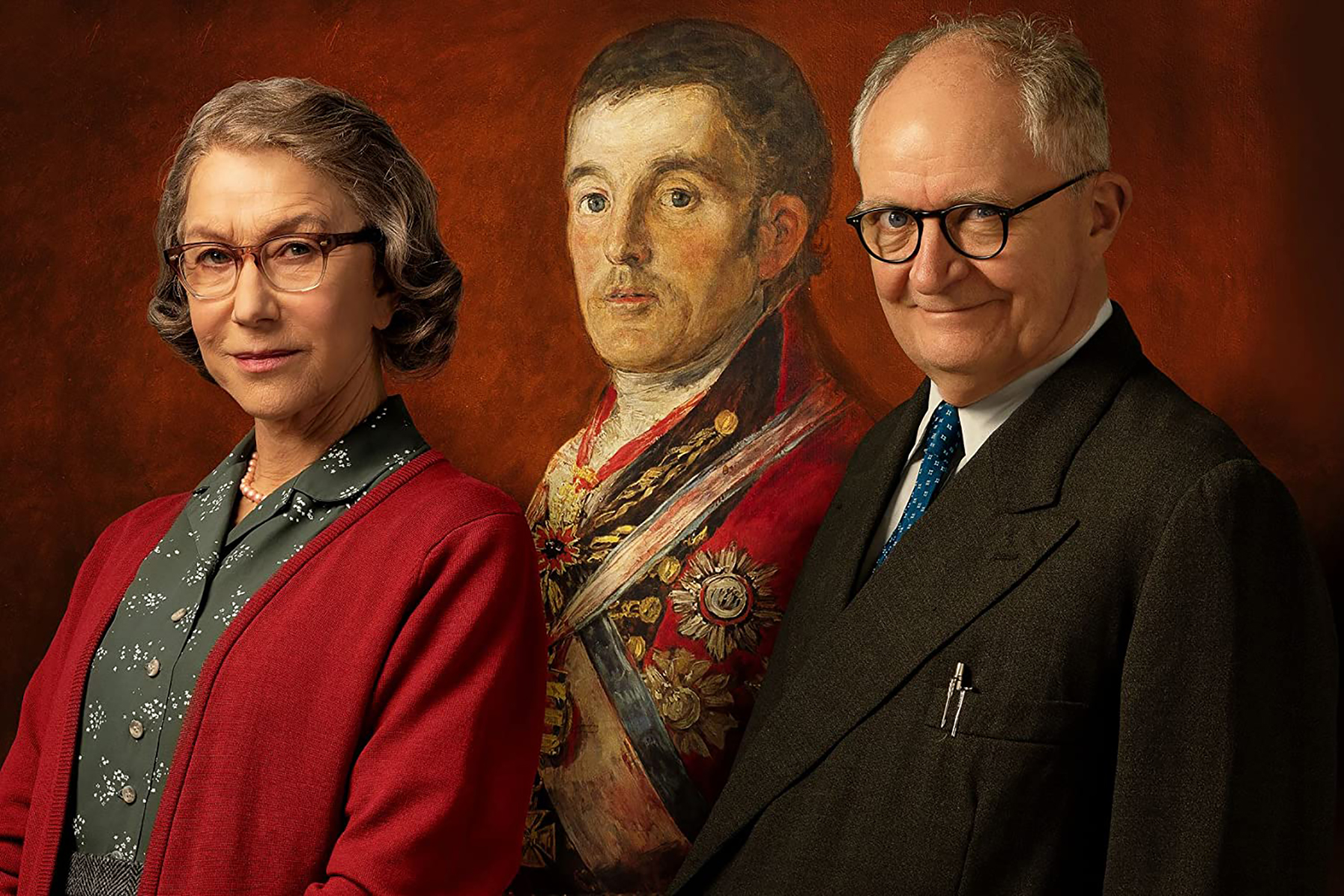
- Festivals
Venice Report: The Duke
It is indeed a strange year when one of the biggest movies at the Venice Festival is a little British comedy with a title that misleads some theatergoers into expecting a typical period piece. The Duke is neither typical nor a costume drama. It tells the little-known but true story of Kempton Bunton (yes, that was his real name) from Newcastle in North England who “borrowed” the world-famous painting of the Duke of Wellington by Francisco Goya from the National Gallery in London. During the trial following its “return”, the protagonist, played by Jim Broadbent, delivers one punchline after another while on the stand. Helen Mirren was cast as his wife Dorothy and Fionn Whitehead (Dunkirk) is their son Jackie and Matthew Goode plays the lawyer. The Duke is directed by Roger Mitchell. We spoke with the director, the leading man, and producer Nicky Bentham at the festival:
How much did you know about this story before you were involved with the film?
Roger Mitchell: Much to my chagrin, I had never heard the story.
Jim Broadbent: I didn’t know anything about it. It rang a very vague bell in my head when I read the script. It is strange because in 1961, I was 11 years old and it was a big story in the press at the time. But it had been forgotten since.
How did you find the story?
Nicky Bentham: I optioned the account that his grandson Christopher Bunton wrote about his grandfather’s life as well as all of Kempton’s plays and memoirs and all the family material from his son Jackie, who is still alive, the life rights.
The film came together fairly quickly. When did you finish shooting?
RM: Literally two weeks before lockdown.
NB: We were very lucky. But it’s sad that we cannot bring everyone together for the premiere. We were supposed to have a cast & crew screening in London in August and had invited Christopher, but he lives in New York.
Kempton Bunton is a kind of Robin Hood, but he’s not just loveable, he also has another side to him, right?
JB: He was forward-thinking; he wanted the democratic process to open up and make everyone equal. But he is an unreconstructed chauvinist and treats his wife fairly appallingly, wants her to go out and work in the most menial jobs while he doesn’t mind getting sacked from various jobs himself. He lost lots and lots of jobs, many more than we see in the film.
RM: He steals toilet rolls; he takes flowers off of someone else’s grave to put them on his daughter’s. He is a bore, he talks and talks and talks, he bosses other people around, he likes sitting around while his wife makes him tea. So, in those respects, he’s rather an irritating person. I think that adds to the pleasure of the film, that within this eccentric there is this extraordinary sense of right and wrong with this vision of connectedness.
JB: He was a good man who had his heart in the right place and wanted to do good things. It was interesting to play a character who had those two sides. He was rude but then he was above all kind. It’s a good way to build a character with those contradictions.
What is his overall characteristic?
JB: Kindness. When he’s not kind, he’s not aware of it. He wanted everyone to live together in harmony.
Roger, did you always have Jim in mind for the lead?
RM: Yes, in fact, I had no one else but him. I told Nicky; I don’t think I can to this film if he doesn’t play this part. I couldn’t imagine anyone else but him. And he happily agreed.
NB: It was a big relief when he jumped on board.
And Helen Mirren?
RM: She was the first one I sent the script to, but I never expected her to play this smaller part of a woman that cleans other people’s houses. She is not exactly wearing a tiara in this film! She has no makeup; she is heavier than we’re used to seeing her and she had no padding. I was delighted she jumped at the part.
Jim, do you learn anything from the characters that you play?
JB: We shot it chronologically for the most part, certainly the last part with the trial. And obviously I had read the script many times and learned it, but it was something of a revelation, filming the trial, and how he behaved and won over the jury. That was quite moving and revealing. It was then that I realized who he really was.
The Italians are the butt of jokes when the police immediately assume that they stole the Goya…
JB: Yes, they jumped to the conclusion because Italians had just stolen something from the Louvre not too long before. Plus, they didn’t think that a highly organized gang of thieves existed in Britain. They certainly didn’t think he’d be Kempton Bunton. He was the most unlikely suspect.
The painting amazingly ended up in a scene of Dr. No with Sean Connery doing a quick double-take when he sees it. Why did you decide to put that scene in the movie?
RM: Because no one ever remembers that the painting is in a Bond – the first Bond – movie! It’s the proverbial gorilla that walks through the room and no one sees it.
How is it for you to premiere in Venice in such a strange year?
JB: It’s a privilege. We are very lucky to have gotten this chance. There is a terrible feeling across the industry. Everyone has had projects waiting to be realized. And we have been really lucky to be able to be here.